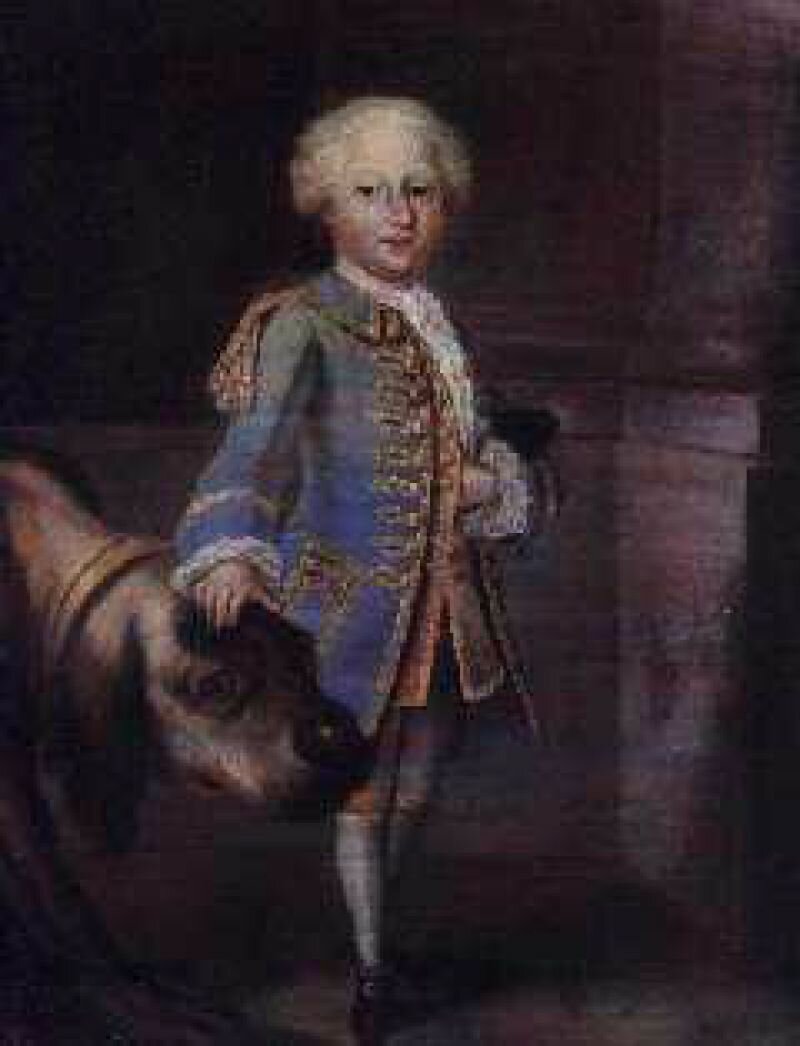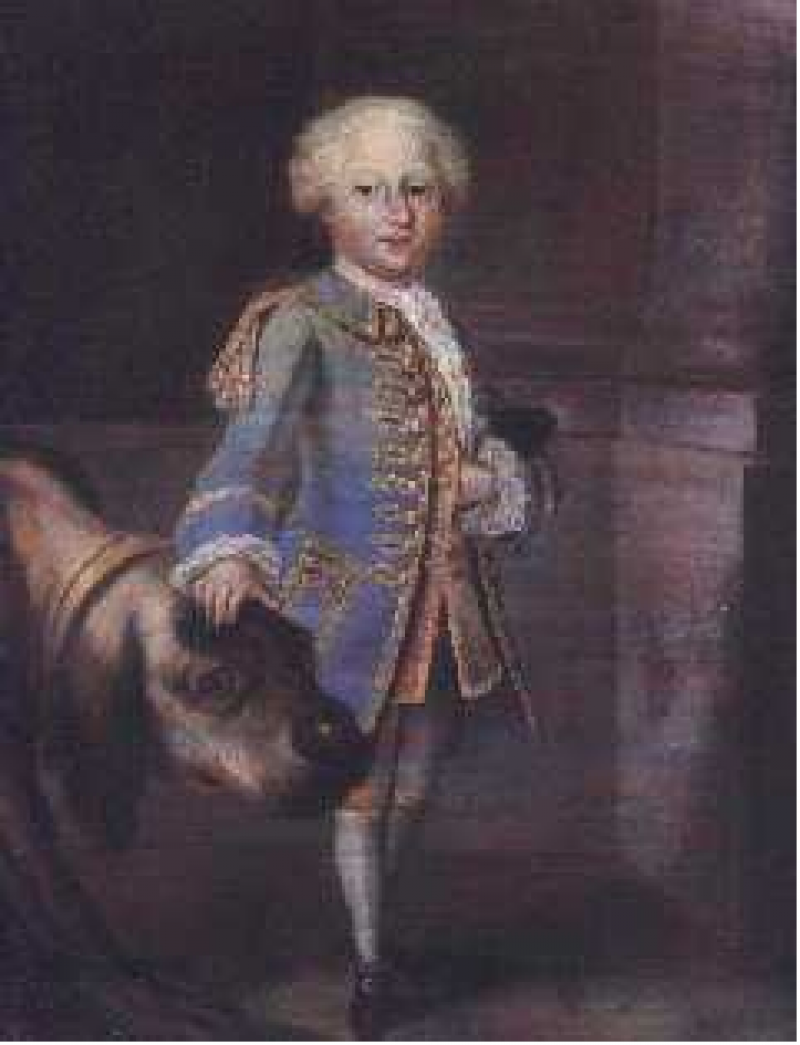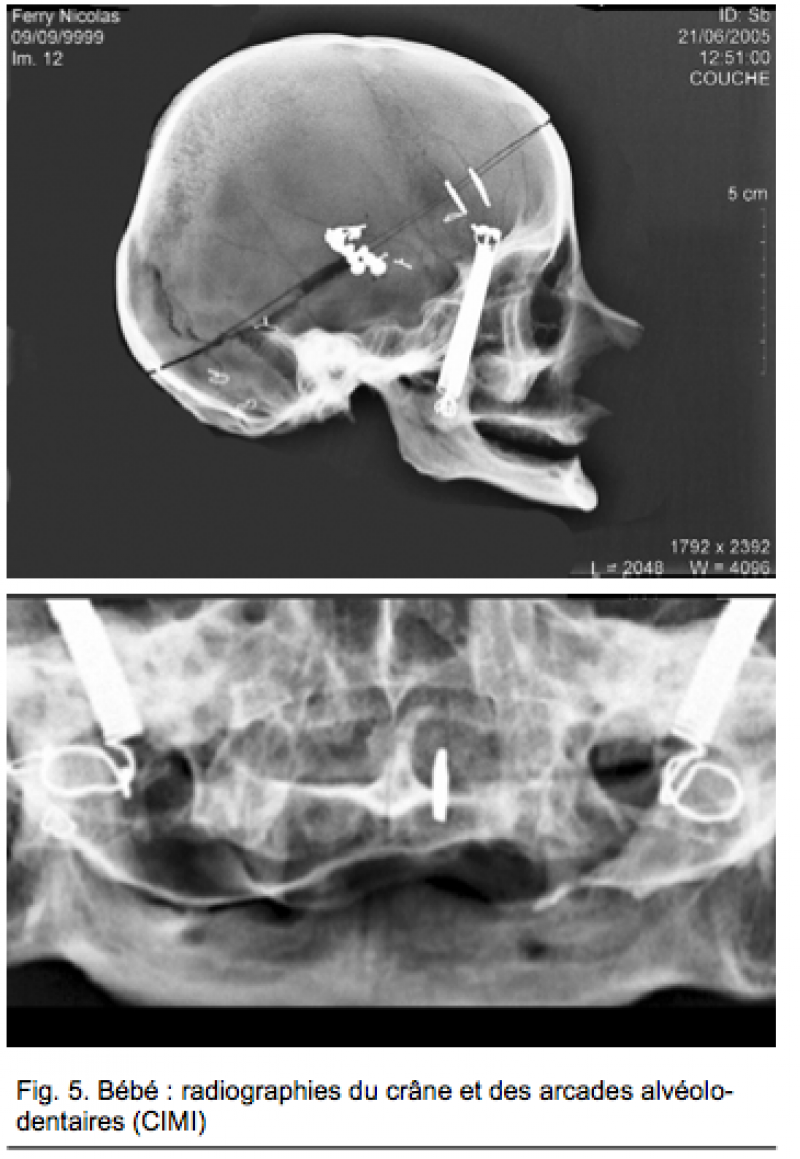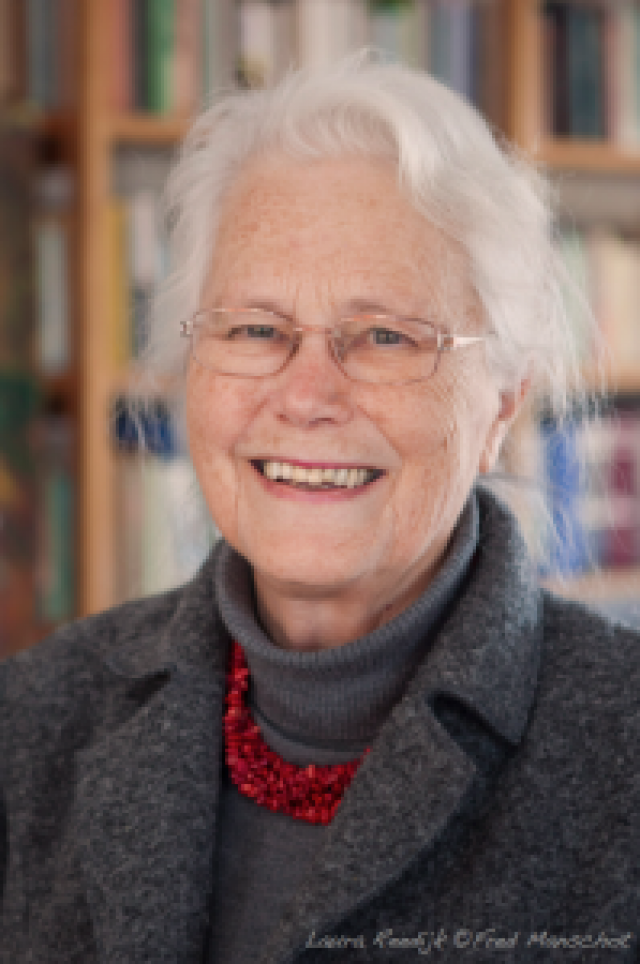
L
Laura Reedijk

05.10.2013
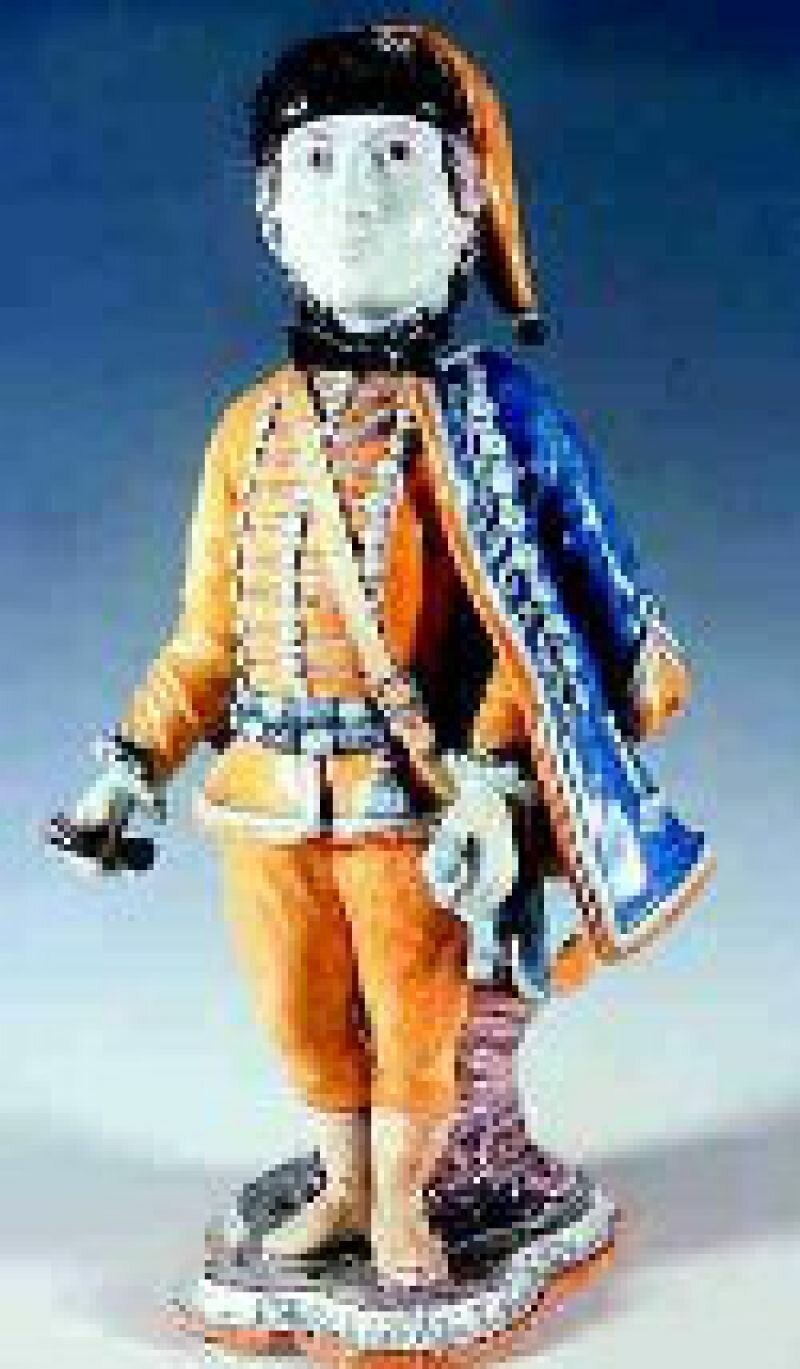
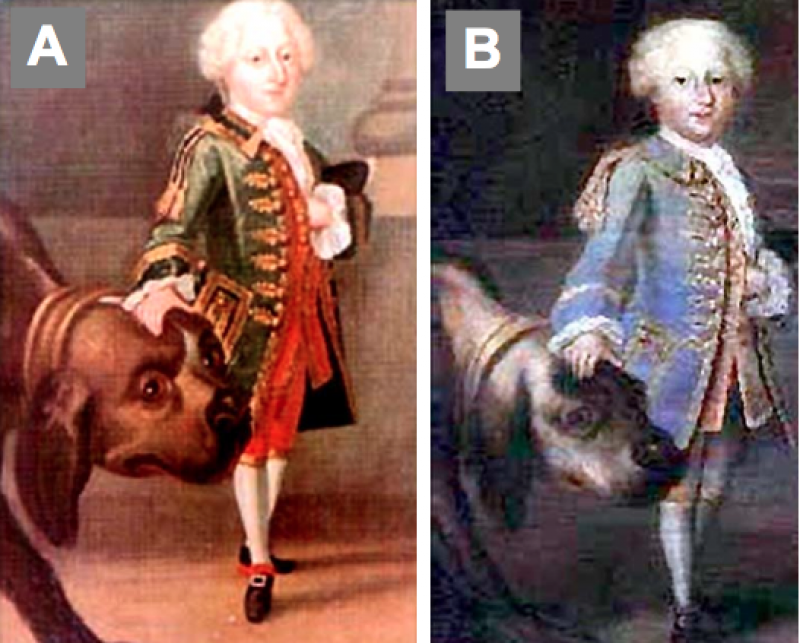
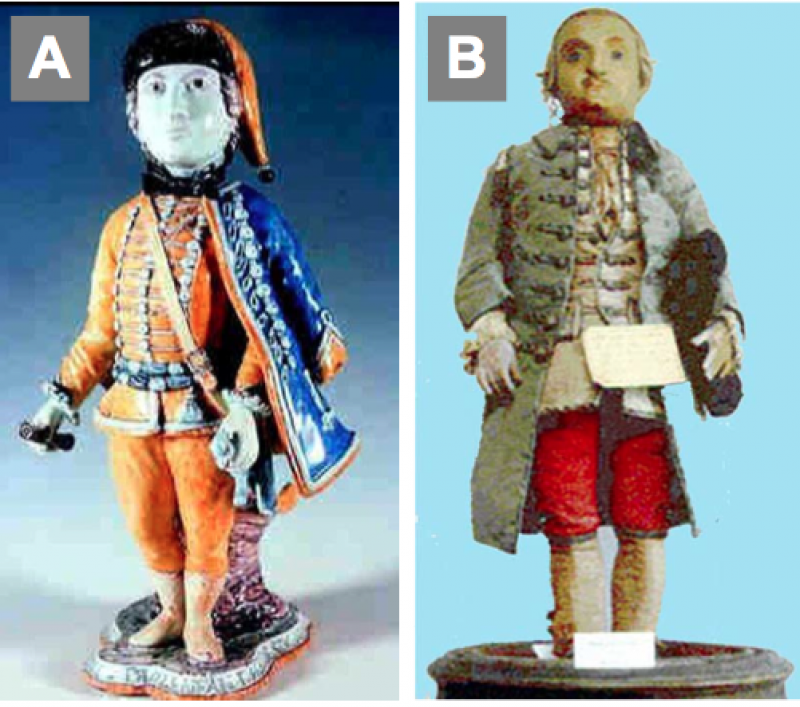
Le Nain Bébé, or dwarf baby, was born as Nicolas Ferry in 1741 to a family of farmers. He was twenty-five centimetres tall and weighed less than five ounces. He never grew to be taller than eighty-nine centimetres. Although not directly visible, he was most likely mentally impaired. When he was brought to court, they unsuccessfully attempted to teach him how to read and write. All he really could do was dance. They described him as being stubborn, temperamental, lazy and jealous, even ‘sensual’ and also gluttonous.
He was an enormous attraction and was treated as a living doll. A miniature castle of a metre and a half tall was built for him and was fitted with furniture scaled to suit his size. If ever he became angry, he would retreat to his castle, and when Stanislas called for him, he’d open the windows and gracefully declare, ‘tell the king that I am not in.’
He had a great intolerance for noise. When the king played backgammon, Bébé would make such a whopping fuss that the king would have no choice but to stop. He’d then set him on the table, upon which Bébé would build towers from the game pieces. He also had his own miniature carriage drawn by goats that he would tend to himself in the gardens of the palace. He also enjoyed hiding under the skirts of the ladies of court, which is very likely what granted him the description of being ‘sensual.’ I believe that, because he was considered a non-person, he overheard much of the gossip, which allowed him to act as a spy for the king. Poor Bébé. He was a plaything for the nobility.
Empress Elizabeth of Russia once even tried to steal Bébé by sending an envoy. The Duchess of Humniecka, who was related to Stanislas, visited the palace in 1757 when Bébé was eighteen years old. Accompanying her was a twenty-two year old Polish dwarf who called himself Boruslawski with whom she travelled on her visits to the royal houses of Europe. He was exceptionally well developed and could even speak three languages. He ‘beamed with youth and vitality,’ while Bébé was already aging visibly. Boruslawski, who was only seventy-five centimetres tall, apologised to Bébé for being smaller than him. Bébé explained that he had been ill and had grown because of it! He was so jealous of the Pole that he tried to throw him into the fireplace (the Polish dwarf, by the way, lived to be ninety-eight years old and married a woman of normal posture at forty with whom he had four children).
Bébé rapidly declined during the last years of his life. While he was withering away, a suitable wife was found for him: Therese Vouvray, ninety centimetres tall. However, before the engagement could commence, Bébé fell terminally ill. Stanislas sent for his mother and Bébé died in her arms at twenty-two years of age on June 9th, 1764. Despite being distraught by Bébé’s death, Stanislas allowed his Swedish doctor to dissect the body from top to bottom. His skeleton was sent in a glass casing to the museum of natural history in Paris, where it still resides to this day. Even in death, the little man was poked and prodded.
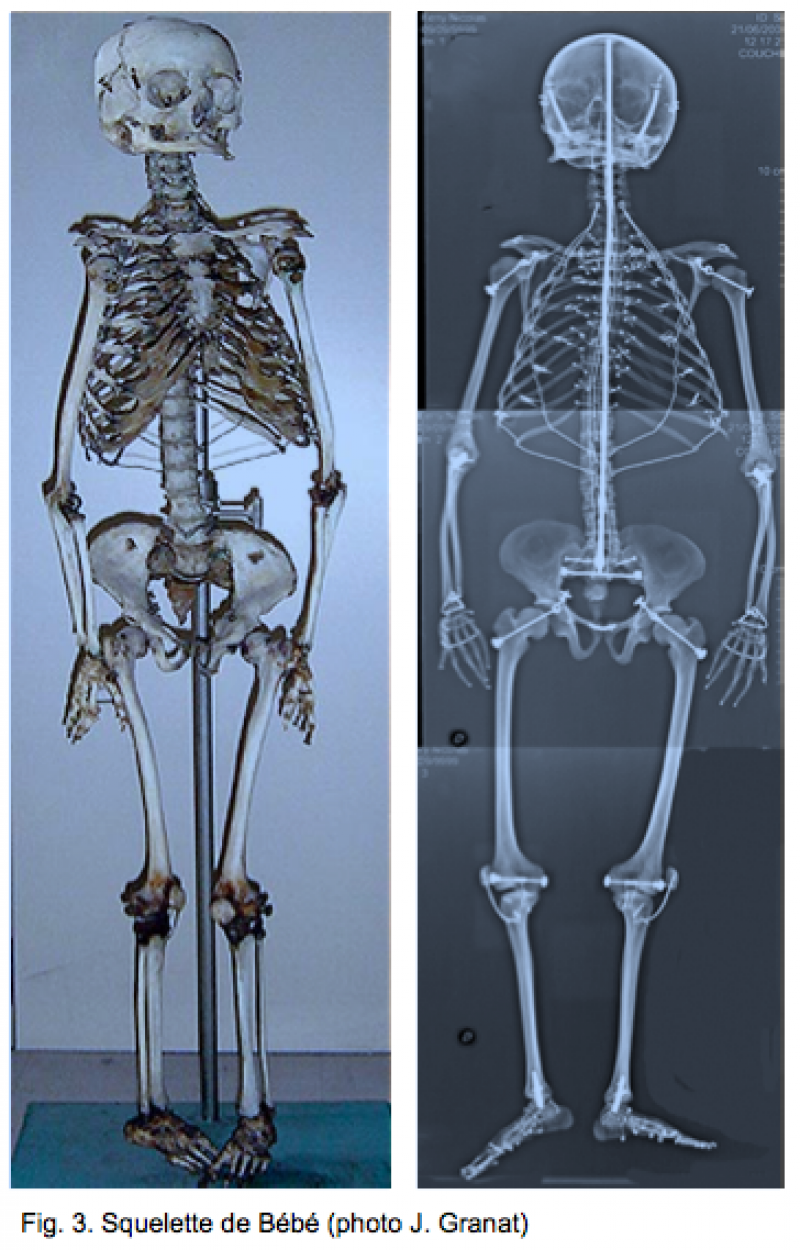
Not all mementos to the little court jester are lost. His portrait hangs in the historical museum of Nancy, where he is depicted wearing a magnificent blue uniform adorned with trestles. He stares back at us with a look of defiance, while his right hand rests on the head of a large dog. In the case next to the painting, various pieces of his now deteriorating little shoes and little clothes are on display.
